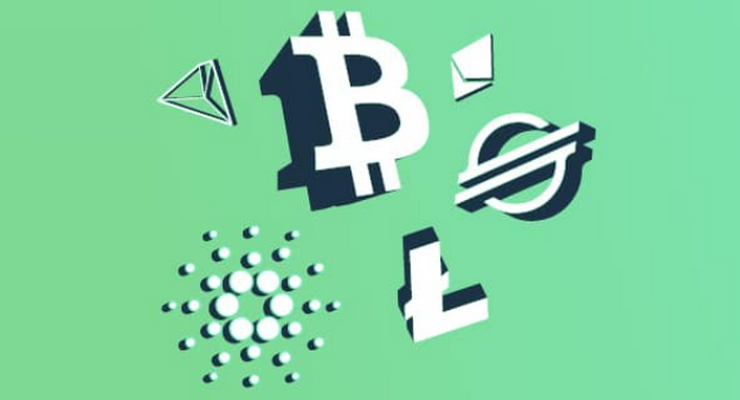
In 2012 young Eric Finman, aged 11, bought about $1,000 worth of Bitcoin with money he borrowed from his grandmother. The best investment she ever made was worth $4.5 million in 2019.
In December of last year, Carolina Panthers offensive lineman Russell Okung claimed that he was the first NFL player to be paid in Bitcoin, with half of his yearly $13 million salary converted to cryptocurrency.
Crypto-what? While it’s been around for nearly a decade, you’re just starting to hear about it, perhaps because you might not have had hundreds of thousands of dollars lying around to invest in the new money. But “cryptocurrencies,” which includes bitcoin, have a history that dates back further than 2011.
According to EToro, who have created an excellent beginner’s guide to cryptocurrency, in 1998 computer scientist Nick Szabo developed a cryptocurrency called bit gold. While the currency was never fully launched, it is credited as paving the way for bitcoin.
Then in October of 2008, a whitepaper by Satoshi Nakamoto described a decentralized network used to fuel a new cryptocurrency called Bitcoin. It would take years before merchants would begin to accept it as payment, but over the next several years, more cryptocurrencies would launch, and ride the emerging cryptocurrency wave.
So what is cryptocurrency? A cryptocurrency is digital currency that uses cryptography as a means of security. No central authority like a bank or government is involved, and instead, cryptocurrencies operate through something called a “distributed ledger,” a gigantic virtual one that tracks every cryptocurrency transaction.
A cryptocurrency has a set, defined monetary policy, whether it’s a fixed limit of tokens or allowing the creation of new tokens based on predetermined rules. It isn’t based on any commodity, like gold or soybeans or wheat or steel.
So, the distributed ledger that holds cryptocurrency transactions is known as a blockchain. That blockchain consists of blocks, which hold individual transaction information.
This information is timestamped and posted to the ledger, so each transaction can be verified by other blockchain stakeholders and never be altered.
Users agree to pay a small fee for making transactions, which helps maintain the security of the blockchain itself.
You want to send your friend a small amount of bitcoin? Okay. You create a transaction using your bitcoin “wallet” and request to send bitcoin to your friend’s wallet, agreeing to pay a nominal transaction fee along the way. After you make the transaction request, your transaction gets grouped with other transactions into a block on the bitcoin blockchain. This block is verified by miners and posted to the blockchain, making the transaction complete.
The transaction has a verified monetary value, which is constantly monitored by thousands of “miners” around the world. We’ll get to them.
Meanwhile, not only will the transaction usually be completed in a matter of seconds or minutes, it will only cost you a fraction of the fee you would’ve paid using a traditional money transfer service.
One of the early appeals of cryptocurrency was that it offered the opportunity to transfer large amounts of money anonymously without local, state, or federal interference. Now, cryptocurrency is used for such mundane tasks as paying rent and bills. Some use it as collateral to obtain online loans.
Okay, so those miners? Cryptocurrency “mining” refers to the reward gained from verifying transactions on a blockchain. That creates the initial value. Blockchain transactions are encrypted when added to a block. Therefore, these transactions need to be verified for accuracy before the blockchain can continue adding transactions to the next block.
Miners use their computing power to solve complex mathematical problems to verify transactions within a block on the blockchain. The first miner to solve the problem and verify all of the transactions in a block is rewarded with a fee for their services. This method of securing a blockchain is known as “proof of work” (POW).
But it’s not a gig you can do in your garage. Specialized and expensive computer hardware is needed to mine quickly enough to solve the puzzle before other miners and receive a cryptocurrency reward. Entire large companies have now been created to mine cryptocurrency and profit from the rewards.
Why? With “Fiat” currencies—coins and bills—nations can print and restrict the printing of money however they please. This means the value can occasionally fluctuate. In fact, in economically unstable countries where hyperinflation is common, you might want to put your money on cryptocurrencies, so to speak.
Cryptocurrencies have a set, defined monetary policy that cannot be changed by anyone, regardless of who they are. Or how wealthy they are. In fact—and write this down somewhere—the mathematical Bitcoin formula, for example, dictates there will only ever be 21 million bitcoin created. Ever. No exceptions. This is a sense of stability that cannot be found in a policy of printed and minted currency.
Cryptocurrencies are also obviously easier to transport and divide.
Cryptocurrencies are just pieces of information that are used to keep track of transactions and values. These can be transported across any border without censorship, and even be divided into fractions of a penny if desired.
And yes, there are Bitcoin ATMs now available as well. Need to take out $1000 in cash? Insert your Bitcoin ATM card. The bitcoin ATM will “sell” your Bitcoin for you in that amount to the hundreds of thousands of miners and buyers online at that moment. It’s as fast as taking your money out of your local bank.
It’s all based on mathematical calculations. Those don’t lose value. And Bitcoin also creates its own momentum, based on its popularity. Every cryptocurrency Google search or article—like this one, for example—creates new interest and momentum, thus driving up its value.
Arthur M. Okun Professor of Economics at Yale University Aleh Tsyvinski,, said in a study published last month, “It is important to distinguish digital currencies and blockchain technology, the distributed ledger that records bitcoin transactions.
“Even if one does not like crypto currencies,” Tsyvinski continued, “there is no doubt that blockchain technology created a new and important area of innovation. As with many other areas, the companies that use blockchain to work on not-very-glamorous things such as improving container shipping documentations may create lasting value using this technology.”
More information on cryptocurrency is available at www.etoro.com





